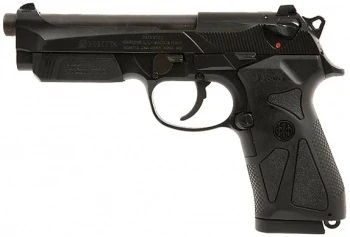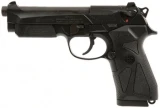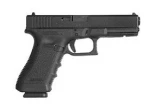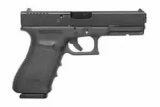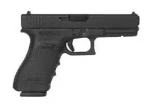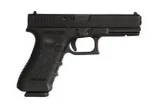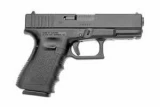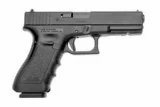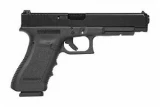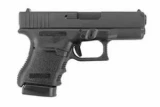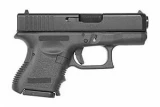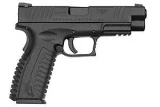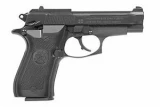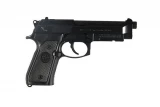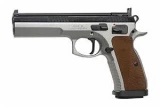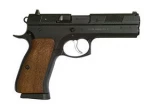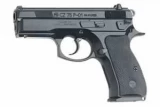Beretta 90-TWO vs Nagant 1895
Put handguns head to head to compare caliber and more.
|
$409.85
|
vs |
$0.00
|
| Handguns | Beretta 90-TWO | Nagant 1895 |
|---|---|---|
| Summary | ||
| Rating | ||
| Rank | ||
| Action | Double Action | |
| Caliber | 9x19mm Parabellum | |
| Capacity | 17+1 | 17+1 |
| Sights | Night Sights | Front Blade |
| Barrel Length | 4.9" | 4.5" |
| Finish | Black | Stainless Steel |
| Gun Type | Pistol | Revolver |
| Details | ||
| Brand | Beretta | |
| Reviews | See 20 Reviews | N/A |
| Prices | ||
| MSRP | $413.85 | $0.00 |
| Used Price | $289.70 | $0.00 |
| Sale Price | $372.47 | $0.00 |
Handguns Descriptions
Beretta 90-TWO
The newly designed frame of 90two pistol ensures trouble-free insertion and holster extraction, thanks to its rounded and truly snag-free surfaces. Inside the frame, near the disassembly lever, a metallic recoil buffer reduces the impact of the slide assembly against the frame during the shooting cycle. By redistributing the stresses, the recoil buffer increases the service life of the firearm. Trigger guard is also rounded to ensure, when firing with two hands, the correct positioning of the supporting hand.
Nagant 1895
The famous Nagant M1895 Revolver was developed and made by two brothers, Emile and Leon Nagant in their company Fabrique d'armes Émile et Léon Nagant. The company was established in 1859 in Liege, Belgium. Later the company was renamed "L. Nagant & Cie, Liége." The Nagant brothers were probably best known for their important contributions to the design of the Mosin-Nagant Russian service rifle, adopted in 1891. The Russian government adopted the Nagant revolver in 1895. It was first made in Liege and then in 1897 production was moved to Tula, Russia where it was produced until 1945. In total, over 2 million of them were made. The Nagant M1895 was a gas-seal revolver with a non-removable cylinder. It was loaded and unloaded through a gate at the right hand side of the frame. It used uniquely designed cartridges that would seal the cylinder in order not to allow gas to escape through the gap between the barrel breech and cylinder.

